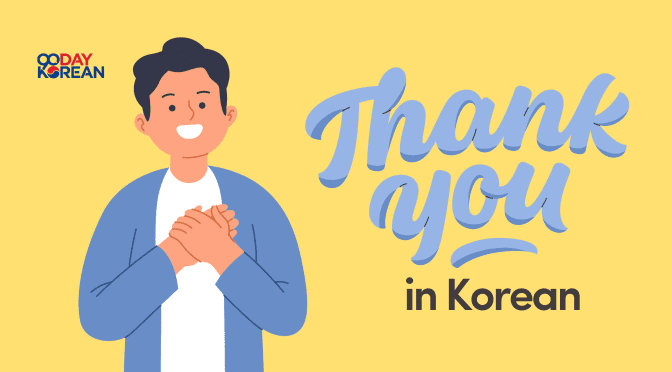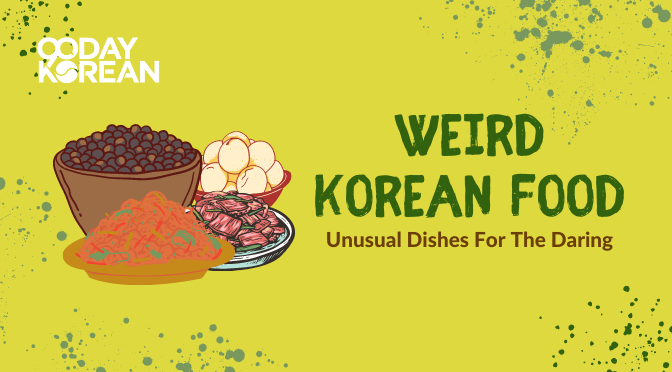In this lesson, we’ll show you how to say “thank you” in Korean. It is one of the most important things to know when learning to speak a language.
Below, we will learn the various ways to say “thank you” in Korean and the people with whom they should be used.
In this guide, we’re giving you the 한글 (hangeul | the Korean alphabet) and the romanized English for these words. It’s better to learn the Korean alphabet to learn the Korean language much more quickly. It’ll help you learn Korean pronunciation more accurately (just like a native speaker).
We also have a downloadable cheat sheet called “How to CORRECTLY use ‘Thank you” in Korean” that you can take on the go. The cheat sheet contains the different ways to say “thank you” with their correct level of speech plus the proper responses. Check it out below:
Contents
- 1 How to say “thank you” in Korean
- 2 How to write “thank you” in Korean
- 3 How to spell “thank you” in Korean
- 4 How to pronounce “thank you” in Korean
- 5 Responses to “Thank You” in Korean
- 6 How to say “Thank you for the food” in Korean
- 7 How to Say “No, Thank You” in Korean
- 8 How do you say “thank you” in Korean slang?
- 9 How to say “Thank you very much” in Korean
- 10 More Ways to Say “Thank You” in Korean
- 11 Body language in expressing one’s gratitude in Korean
- 12 “Thank You” in Korean List
- 13 Wrap Up
How to say “thank you” in Korean
There are several ways to say “thank you” in Korean. When people who speak English start to learn Korean, they are often surprised that there are more ways to say “thank you” than in English. The key is knowing which of the phrases should be used with which people!
- 감사합니다 (gamsahamnida)
- 고맙습니다 (gomapseumnida)
- 고마워요 (gomawoyo)
- 고마워 (gomawo)
Korean culture gives importance to hierarchy and respect, which is why there are different ways of saying thank you and other Korean phrases. Korean native speakers have different ways of speaking with each other depending on the age or position someone holds.
Their way of speaking can vary from formal to casual language. Not to worry, if you follow the Korean etiquette rules, you are sure not to offend anybody.
Once you understand the subtleties of these phrases, listen for “thank you’s” in your day-to-day Korean conversations. You will start to notice when you should use each version of thanks. You will also understand which phrases can be used with friends and which words you should use with someone you don’t know well.
Are we ready to get started on how to say “thank you” in Korean? Let’s get to it!
“Thank You” in Korean (formal)
There are two formal ways to say “Thank you” in Korean:
- 감사합니다 (gamsahamnida)
- 고맙습니다 (gomapseumnida)
Most of the time, you will only need to use one of the two ways of saying this English phrase in Korean below. We’ve also included the romanization to guide you on how to pronounce thank you.
감사합니다 (gam sa ham ni da)
감사합니다 (gam-sa-ham-ni-da) is the formal language version of “thank you.” It comes from the Korean verb 감사하다 (gamsahada), which means “to thank.”
Listen here:
감사합니다 (gam sa ham nida) is one of the most common ways of saying “thank you” in Korean. It uses formal and polite language, so it can be used in a formal setting or with strangers and people older than you. You can use this version of “thanks” for everyday life in Korea.
Examples:
시간 내주셔서 대단히 감사합니다. (sigan naejusyeoseo daedanhi gam sa ham ni da)
Thank you very much for your time.
도와 주셔서 감사합니다. (dowa jusyeoseo gam sa ham ni da)
Thank you for helping me.
염려해 주셔서 감사합니다 (yeomnyeohae jusyeoseo gam sa ham ni da)
Thank you for your concern.
The word 감사 (gamsa) is a noun that means “gratitude” or “appreciation” in the Korean language. The 합니다 (hamnida) part means “to do.” Put them together, and you get 감사합니다 (gamsahamnida | to do thanks).
You can use this phrase to express “thank you” in Korean restaurants, convenience stores, or taxis. It is usually said quite quickly, so the pronunciation might sometimes sound to you like 감삼니다 (gam sam ni da). But they are actually saying 감사합니다 (gam sa ham ni da).
고맙습니다 (go map seum ni da)
The Korean phrase 고맙습니다 (go map seum ni da) is one of the most common ways to say thank you in Korean. You can use it in the same situations as 감사합니다 (gam sa ham ni da).
Listen here:
This “thank you” in Korean would be considered polite. That means you can use it with anyone: friends, family, coworkers, etc. 고맙습니다 (go map seum ni da) is a pure Korean word, so you’ll often hear newscasters use this polite form. It doesn’t matter a whole lot which one you choose; it’s better to be familiar with both versions of “thank you” in Korean. Check out the video below to learn how to pronounce thank you correctly in Korean.
This expression comes from the Korean descriptive verb 고맙다 (gomapda), with the literal meaning of “to be thankful or grateful.”
Below are some example sentences using “thank you” in Korean. You can use 감사합니다 (gamsahamnida) in place of 고맙습니다 (gomapseumnida). It’s still polite, and the meaning would be the same.
Examples:
그렇게 말씀해 주시니 고맙습니다. (geureoke malsseumhae jusini gomapseumnida)
Thank you for saying so.
메시지 보내주셔서 고맙습니다 (mesiji bonaejusyeoseo gomapseumnida)
Thank you for the message.
“Thank You” in Korean (standard)
The standard language used to express “thank you” in Korean is 고마워요 (go-ma-wo-yo). You can use this with somebody close to you, and they’re close in age to you.
Listen here:
This phrase 고맙습니다 (gomapseumnida) comes from 고맙다 (gomapda), which means “to give thanks.” Therefore, this version of “thank you” in Korean is the same as 고맙습니다 (gomapseumnida). 고마워요 (gomawoyo) is still polite, but it’s conjugated differently, so it’s a bit less formal.
Since 고마워요 (gomawoyo) is a slightly less formal version of 고맙습니다 (gomapseumnida), you might be wondering if the same is possible for 감사합니다 (gamsahamnida). It is also possible to say 감사해요 (gamsahaeyo) at this level of politeness, but very few people say this. You can say this form; however, it sounds a bit strange.
99% of the time, you will be speaking in the polite “-요” form of Korean rather than the formal, stuffy “-입니다 (-imnida)” form of Korean. However, you should generally still use the polite words 감사합니다 (gamsahamnida) or 고맙습니다 (gomapseumnida) when saying “thank you” in Korean. The only time you should break this rule of saying thanks is when you are talking to people you are close to, such as your Korean friends.
Example:
정말 고마워요. (jeongmal gomawoyo)
Thank you so much.
알려줘서 고마워요. (allyeojwoseo gomawoyo)
Thank you for letting me know.
“Thank You” in Korean (informal)
The informal version of “thank you” in Korean is 고마워 (go-ma-wo).
You might say 고마워 (gomawo) to somebody you are very close to who is the same age or younger than you. This is an excellent way to thank people who are close friends or siblings.
Listen here:
This version of “thank you” in Korean is used in situations where less polite and formal language is appropriate.
This informal speech of showing thanks is less polite than the other versions of thank you, so it is usually used with close friends or young children.
Learning this “thank you” phrase is better than learning 감사해 (gamsahae) because it is not used often. If you say 감사해 (gamsahae), people will know what you mean. However, 고마워 (gomawo) is a much more natural way of saying “thank you” when speaking Korean informally.
Examples:
난 괜찮아, 고마워. (nan gwaenchana, gomawo)
I’m ok, thanks!
선물을 사줘서 고마워. (seonmuleul sajwoseo gomawo)
Thank you for buying me a present.
How to write “thank you” in Korean
Here’s how to write “thank you” in Korean:
“Thank you” in Korean (formal) → 감사합니다 (gam sa ham ni da)
“Thank you” in Korean (formal) → 고맙습니다 (go map seum ni da)
“Thank you” in Korean (standard) → 고마워요 (gomawoyo)
“Thank you” in Korean (informal) → 고마워 (gomawo)
How to spell “thank you” in Korean
The formal version of “Thank you” in Korean can be spelled as five separate syllables: 고-맙-습-니-다. You don’t need spaces between the syllables. It should look like this: 고맙습니다.
If you’re going to spell it using romanized letters, you can write “gomapseumnida.” It’s pronounced similar to go-map-seum-ni-da. There are no spaces between the letters.
How to pronounce “thank you” in Korean
You can listen to the audio below for the correct pronunciation of “thank you” in Korean.
This video also shows the most common ways how to say thank you and how to pronounce thank you.
If you enjoyed our video on how to say “Thank you” in Korean, you can also subscribe to our YouTube Channel for other helpful videos!
Responses to “Thank You” in Korean
There are various ways that you can respond to someone when they say “thank you” to you. Learning them will be helpful so you can give a polite reply. Let’s go through a few.
1.
This is a way of saying, “You’re welcome.” You should stretch it out in an elongated way to make it extra kind. The phrase comes from the word “아니다 (anida),” which means “no.” It’s similar to saying, “It was nothing, don’t mention it” in English.
2.
This is the equivalent of saying, “Don’t mention it.” If someone says “thank you,” you can respond with 천만에요 (cheonmaneyo).
3.
This is another way of saying, “Don’t mention it.” You can respond to a “thank you” in a more formal way by saying 별말씀을요 (byeolmalsseumeullyo).
How to say “Thank you for the food” in Korean
If someone treated you to a meal and you want to express deep gratitude, you could say 잘 먹었습니다 (jal meogeotseumnida). It’s a formal way of saying “Thank you for the food” or “Thank you for the meal.” It translates to “I ate well.”
How to Say “No, Thank You” in Korean
You can say 괜찮아요, 고마워요 (gwaenchanayo, gomawoyo) when saying “No, thank you” in Korean. This can be used for standard situations.
To increase the formality of “No, thank you” in Korean, you can say 괜찮습니다 고맙습니다 (gwaenchanseumnida gomapseumnida).
How do you say “thank you” in Korean slang?
This one is easy for those who speak English: you can say 땡큐 (ttaengkyu) when using Korean slang. This sounds similar to “Thank you” in English. If you’re texting, you can write ㄱㅅ, which is shorthand for 감사합니다 (gamsahamnida).
How to say “Thank you very much” in Korean
There are many ways to say “Thank you very much” in Korean. Two of the common ways are 대단히 감사합니다 (daedanhi gamsahamnida) and 정말 고마워요 (jeongmal gomawoyo).
The phrase 대단히 감사합니다 (daedanhi gamsahamnida) uses more formal language. The phrase 정말 고마워요 (jeongmal gomawoyo) is used when less formal language is required.
Listen here:
You’re very likely to hear this 대단히 감사합니다 (daedanhi gamsahamnida) during announcements, such as an announcement on the subway.
We already learned 감사합니다 (gamsahamnida) earlier, which is a formal version of “thank you.” The word 대단히 (daedanhi) means “very much” in English. If you put them together, it means “thank you very much.” You can use this phrase in formal situations, such as giving a speech or presentation.
More Ways to Say “Thank You” in Korean
1.
The word 진심 (jinsim) here means “sincerely” in English. If you want to up your “thank you” game in the language, then this is a phrase you will want to add to your repertoire.
2.
The 정말 (jeongmal) part means “really” or “truly,” so it’s like saying “thank you truly” in English. You can use this “thank you” in the Korean version with 감사합니다 or 고맙습니다 (gamsahamnida or gomapseumnida) as well. Use this version when you want to express heartfelt thanks.
3.
This Korean phrase means “thank you for your consideration.” It uses the word 생각 (saenggak | thought) and the verb 주다 (juda | to give) before 감사합니다 (gamsahamnida). Not only is this an expression that you can use in many situations, but it’s also an excellent way to learn some new Korean grammar and sentence structures.
4.
This means “thank you for joining us” in English. 함께 (hamkke | together). 주다 (juda | to give) is used along with 감사합니다 (gamsahamnida) at the end.
5.
This expression means “Thank you for the gift.” The word before 감사합니다 (gamsahamnida) is 선물 (seonmul), which means “gift.”
6.
This means “thank you for your interest” in English. It uses the two verbs 주다 (juda | to give) and 가지다 (gajida | to have or carry), along with 관심 (gwansim | interest). You can also use 감사합니다 (gamsahamnida) in place of 고맙습니다 (gomapseumnida).
7.
This means “thanks for calling back” in English. You can use this expression on the phone, but make sure you know the correct way to say hello on the telephone. It is different than the phrases you’d use to say hello in person.
8.
You can say this version of “thank you” in Korean to express “thank you for coming.” You might use this phrase to thank a friend for coming to a get-together or thank a colleague for attending an event you organized.
9.
This means “I don’t know how to thank you” in English. It’s a formal way of saying thank you and ends with an exclamation.
Body language in expressing one’s gratitude in Korean
In Korean culture, when you express gratitude in a polite way, it extends beyond verbal thanks. It also includes body language, such as bowing.
This body language varies in depth and duration, reflecting the level of gratitude and respect. A deeper bow signifies greater gratitude or apology. This is embedded in social hierarchies and situations. For example, you may have to do a deeper bow with people who hold higher social positions.
“Thank You” in Korean List
If you’d like a simple way of learning these, then follow these basic rules when deciding how to say “thank you” in Korean:
| Korean | Use With |
|---|---|
| Everyone, generally all purpose "thank you" | |
| Similar aged people who you are close to | |
| Younger people who you are close to |
When in doubt, remember what Mom always says—it is better to be polite than impolite! Therefore, if you only learn one way to say “thank you” in Korean, then learn 감사합니다 (gamsahamnida).
If you’re curious about the Korean language, here’s a great write-up where you can learn more about it. You can also check out our structured online course called the 90 Day Korean Membership Program. It’s a great way to learn Korean fast.
Wrap Up
Now you know what expressing gratitude in Korean is like. You might be grateful to your best friend, family member, or even a stranger for small things to big ones. Some people express their gratefulness through speech, some through body language, or through a thoughtful gift. Now it’s your turn!
Get out there and give these expressions a try, and put a smile on the faces of those you run into. Let us know in the comments below how you made use of the Korean word for “thank you” in Korean conversations.
Happy thanking!






gamsahabnida so much this was very useful
You’re welcome, Bianca! ^^ I’m glad that our article has been helpful to you. If you want to know more about the Korean language and culture, you can also check our blog and visit our YouTube channel for articles and videos with great Korean content.